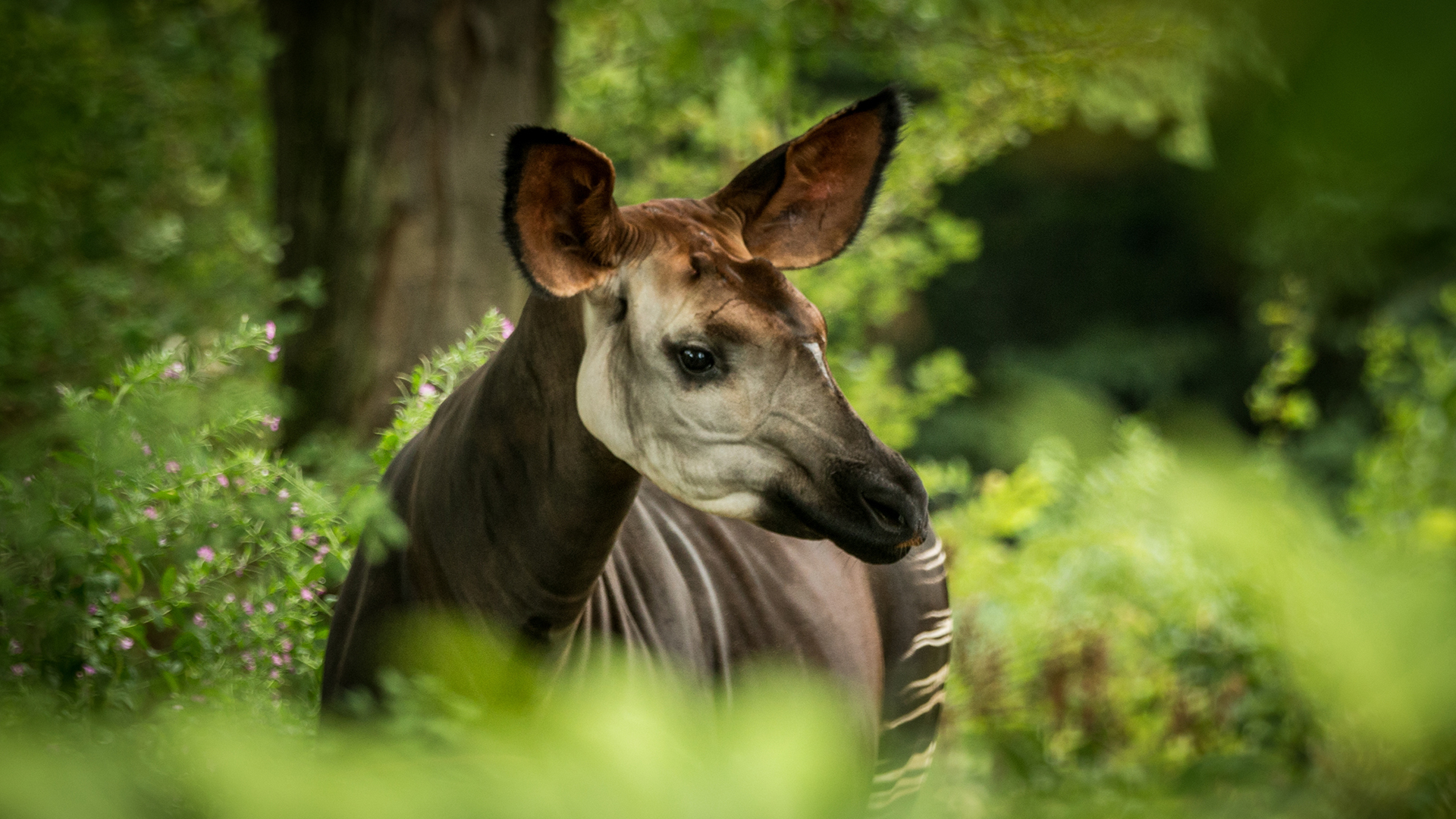The okapi is often called the “zebra giraffe,” but this nickname barely begins to describe just how extraordinary this animal really is.
Found exclusively in the lush, dense rainforests of the Democratic Republic of Congo, the okapi is nature’s ultimate hide-and-seek champion, blending seamlessly into its environment with its bold stripes and shy demeanor.
This elusive creature is so good at staying under the radar that it managed to avoid scientific discovery until the early 20th century – a feat that’s almost unheard of in the animal world! You will hear more about this soon!
What makes the okapi even more fascinating is its one-of-a-kind combination of traits. Imagine a creature with legs striped like a zebra, a body shape that hints at its giraffe cousin, and a tongue so impressive it could win gold medals in a flexibility contest.
The okapi’s adaptations are perfectly tuned to its life in the rainforest, from its silent movements to its oily, rain-repellent coat. It’s no wonder this animal remains one of the best-kept secrets of the animal kingdom.
Intrigued yet? Get ready, because we’re about to explore mind-blowing facts about the okapi that will leave you in awe of this mysterious and majestic mammal!
1. Giraffe Cousins
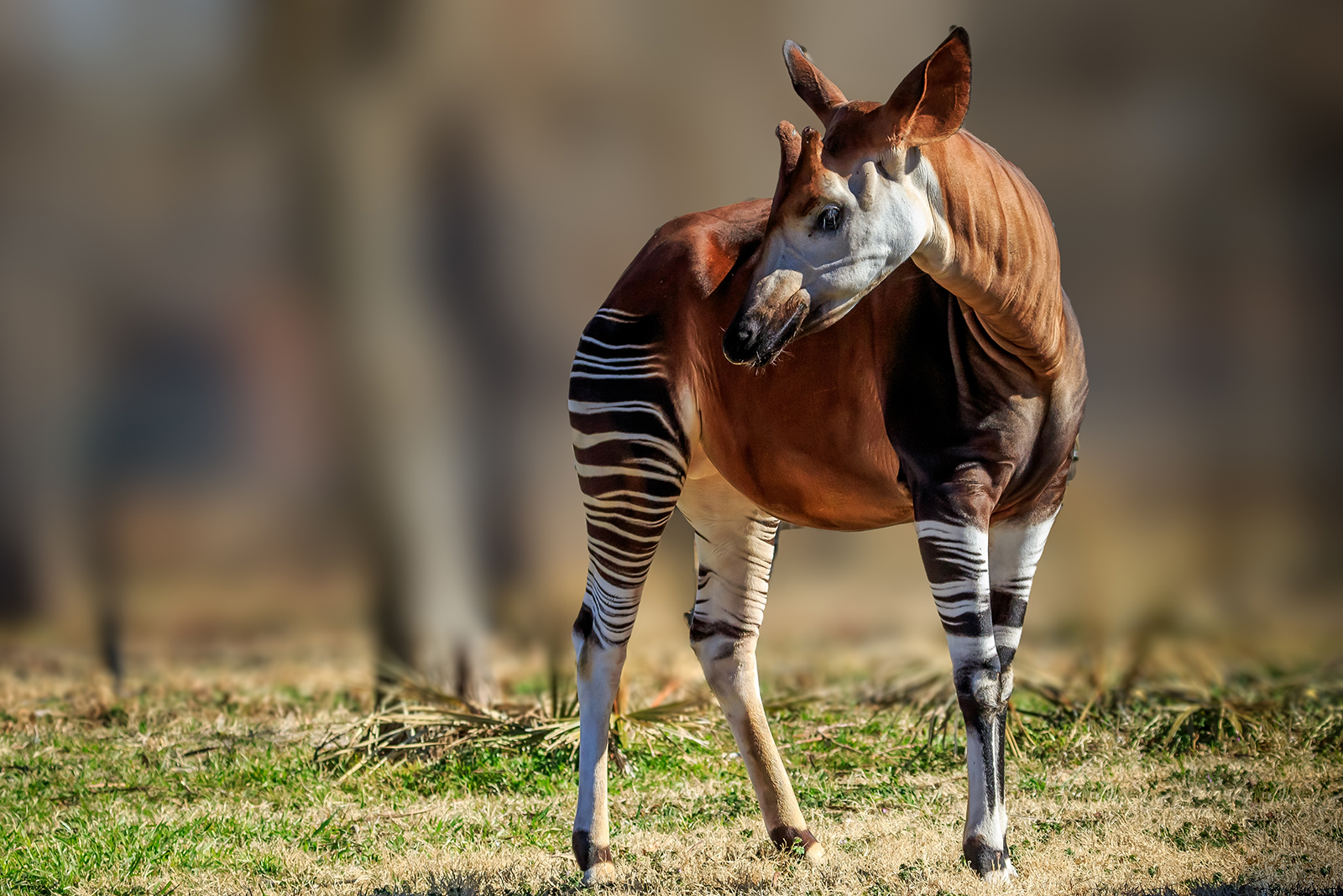
Credit: Shutterstock
At first glance, you might think the okapi is part zebra, thanks to its striking striped legs and bold markings. However, the okapi’s closest relative is actually the giraffe! This connection might seem surprising at first, but the clues are there if you look closely.
Both species share an elongated neck structure – although the okapi’s is far less dramatic – and a long, prehensile tongue that can extend up to 18 inches. This incredible tongue is a versatile tool for grooming and even cleaning its own ears.
Despite their different lifestyles, okapis and giraffes share a unique grace and elegance, making them unmistakable members of the same family tree. Scientists believe their evolutionary paths diverged millions of years ago, resulting in the giraffe’s towering stature and the okapi’s smaller, more secretive build.
The connection between these two animals is a reminder of how nature’s creativity knows no bounds, creating creatures that are both unique and undeniably linked!
2. Long Tongue
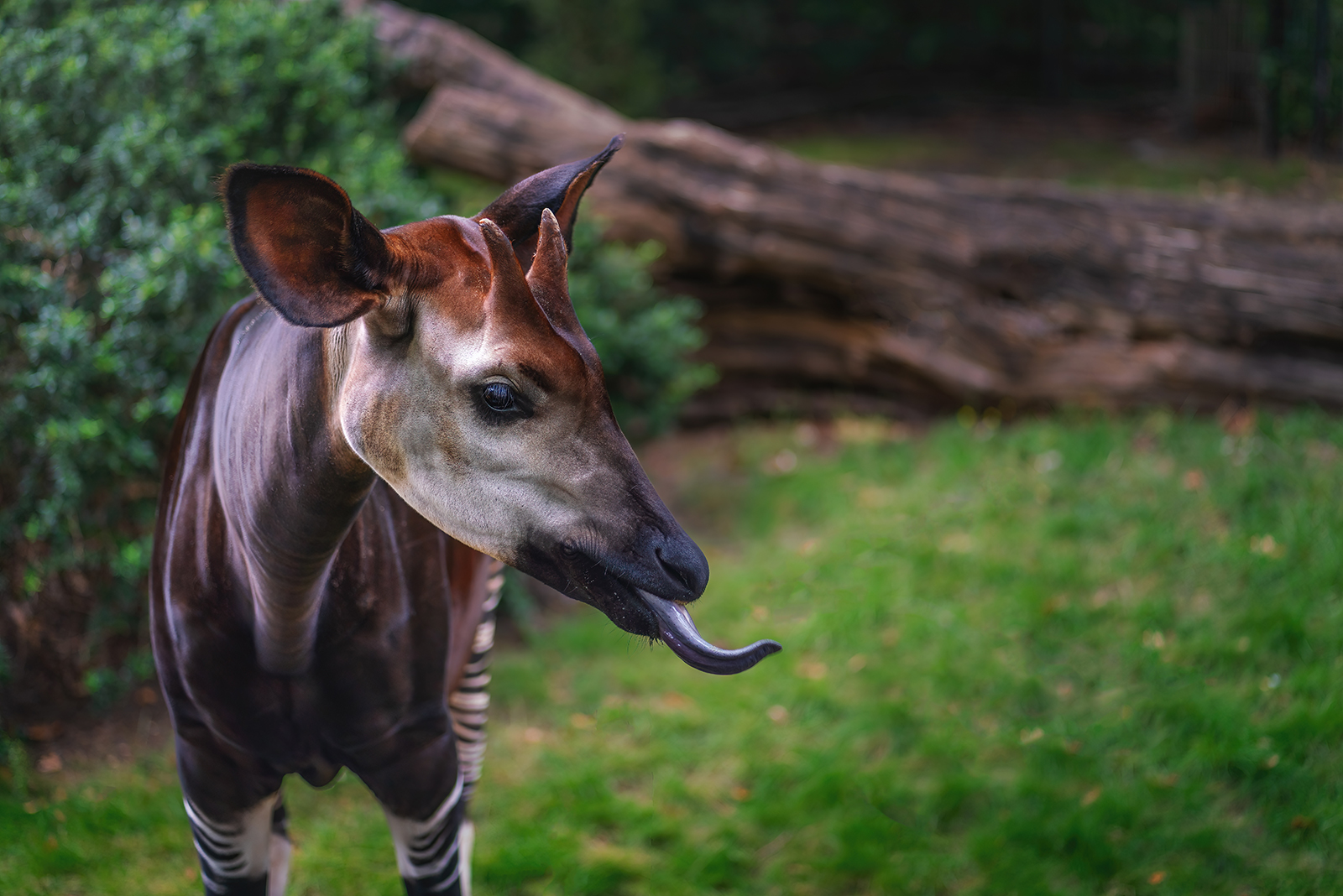
Credit: Shutterstock
Let’s talk some more about the okapi’s tongue, shall we?. It’s truly a showstopper! Measuring up to a jaw-dropping 18 inches, this prehensile wonder is one of the most versatile tools in the animal kingdom.
The okapi uses its tongue not just for eating but for some seriously impressive multitasking. It can strip leaves and buds from branches with surgeon-like precision, clean its own eyes and ears, and even groom its striped legs to keep them looking sharp.
Imagine having a tongue that could double as a cleaning cloth and a utensil – that’s the okapi’s superpower! Its dark blue or black color helps protect it from sunburn in the harsh rainforest sunlight, adding yet another layer of brilliance to this already amazing adaptation.
Evolution really can produce solutions that are as practical as they are mind-blowing! Quite a bit of a survival tool, isn’t it?
3. Stealth Mastering
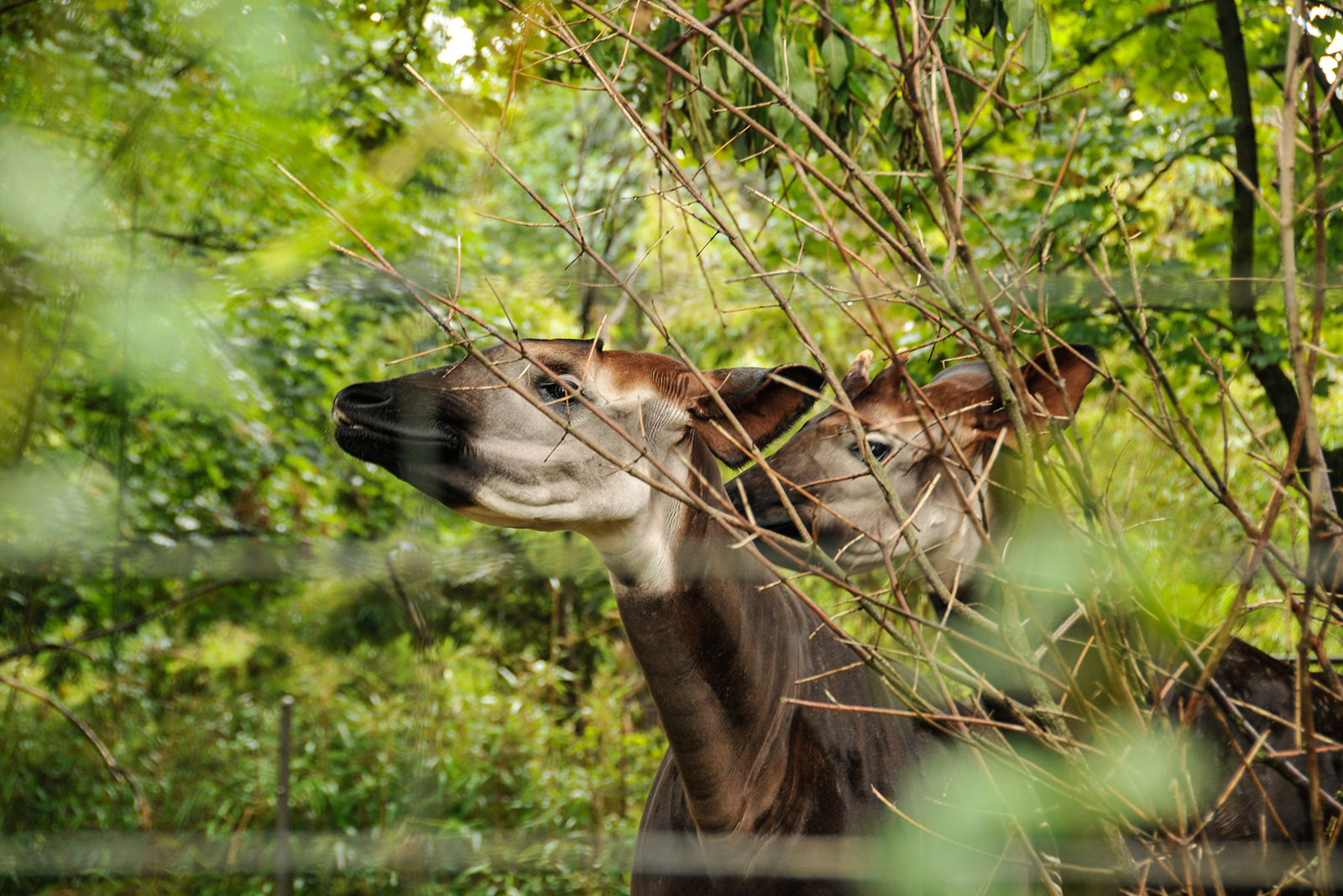
Credit: Shutterstock
Living in the dense rainforests, okapis are like ninjas. Their striped legs serve as top-tier camouflage, blending seamlessly with the dappled sunlight filtering through the trees! This clever adaptation makes them nearly invisible to predators like leopards, who rely on sight to hunt.
But it’s not just their stripes that make them masters of stealth. Okapis move quietly and deliberately, almost as if they’re tiptoeing through the jungle. Their ability to remain undetected is so refined that even researchers have a hard time spotting them.
This stealthy behavior is a full-blown way of life for these shy and solitary creatures. If the rainforest had an award for “Best at Staying Hidden,” the okapi would win it hands down!
4. Once Unknown To Science
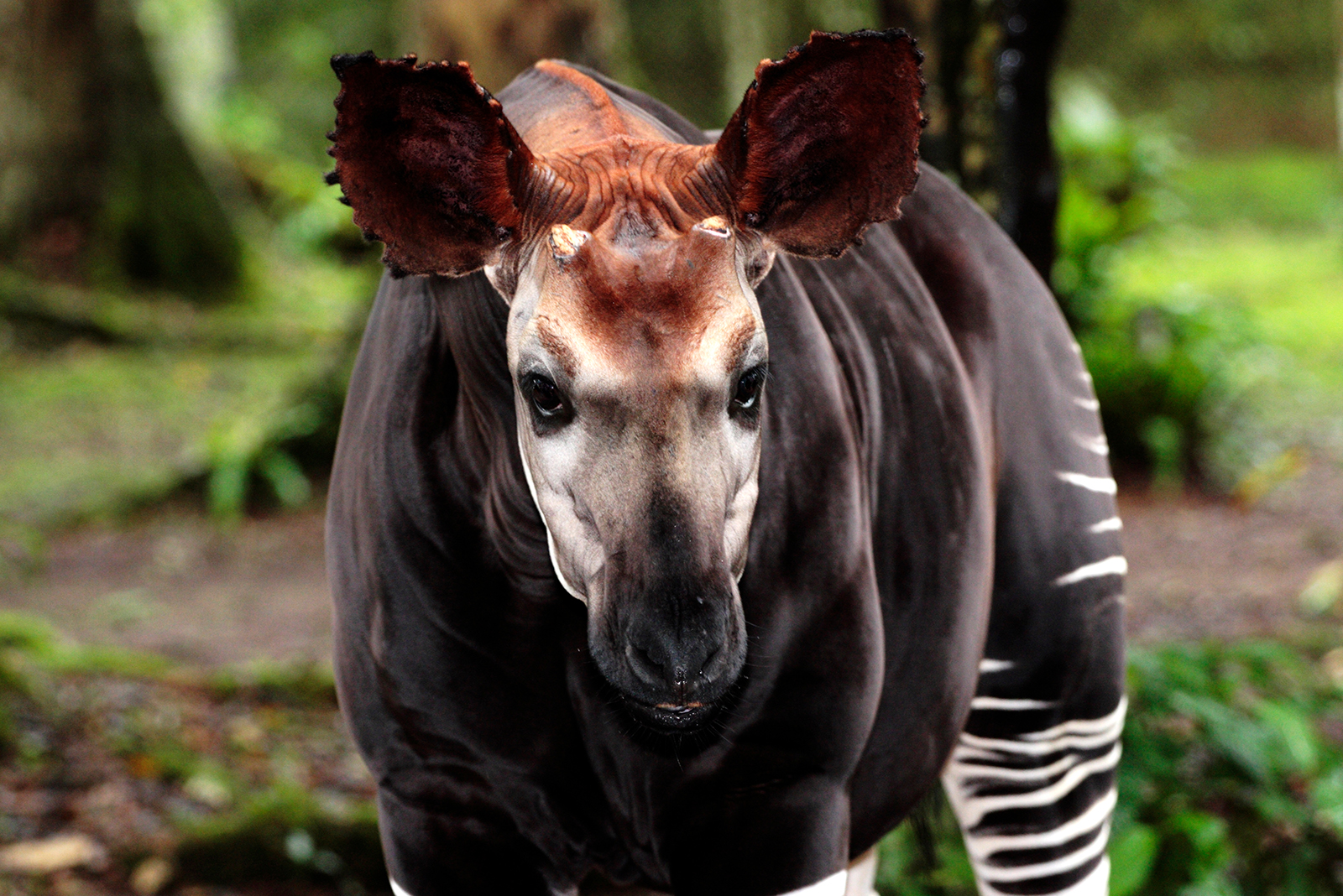
Credit: Shutterstock
Despite roaming the African rainforests for thousands of years, the okapi managed to keep its existence a well-guarded secret from the scientific community. It wasn’t until 1901 that the okapi was officially “discovered” by scientists, earning it the nickname “Africa’s hidden unicorn.”
This title is fitting for an animal so elusive that local legends described it as a mythical beast. Early explorers heard whispers about a mysterious creature but could never quite pin it down. When scientists finally documented the okapi, it was like unearthing a hidden treasure!
Its secretive nature and remote habitat played a huge role in keeping it under wraps for so long. Even today, spotting an okapi in the wild feels like stumbling upon a real-life unicorn.
5. Communicating With Low-Frequency Sounds
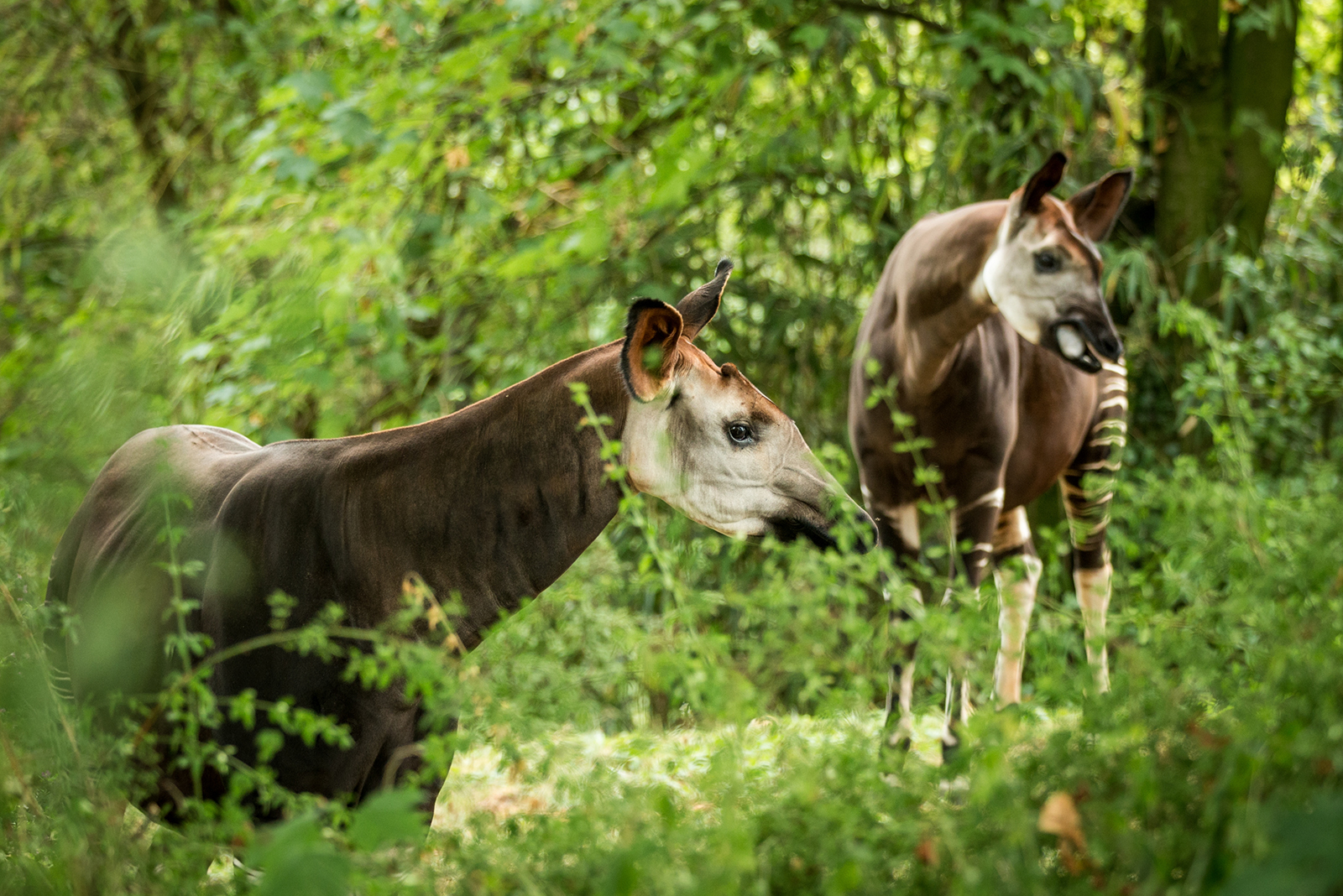
Credit: Shutterstock
Okapis might seem like the strong, silent type, but they’ve got a secret language all their own. These generally quiet animals use low-frequency sounds to communicate. So low that humans can’t even hear them!
This unique ability is especially important in the dense rainforest, where thick vegetation makes it hard to see. Mothers and calves rely on these hidden “whispers” to stay connected, even when they’re out of sight. Think of it as a private radio frequency, designed specifically for okapis.
This secret communication system helps them avoid predators while maintaining their close family bonds. It’s yet another way the okapi proves it’s not just mysterious but also marvelously equipped for life in the jungle!
6. Built-In Raincoat
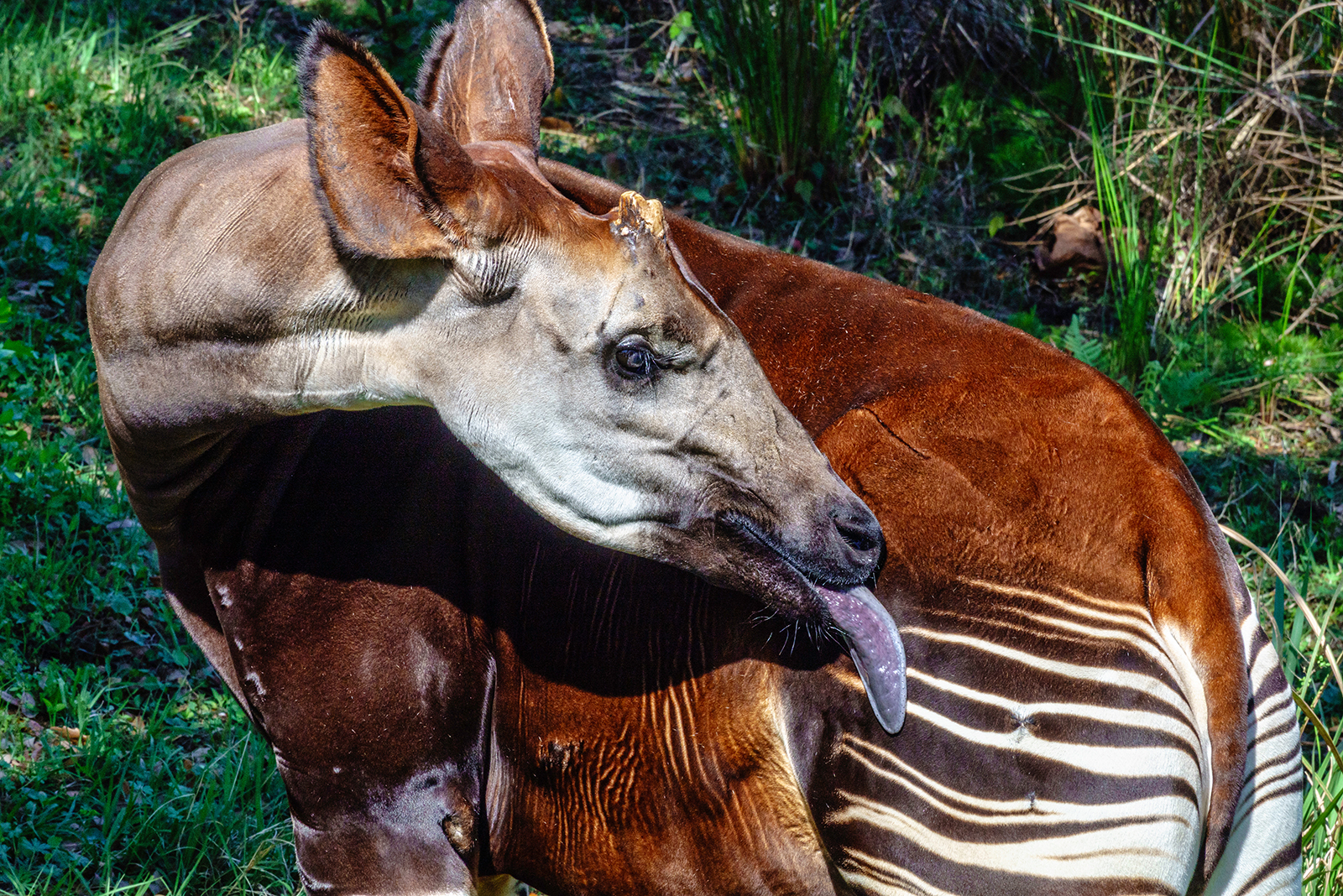
Credit: Shutterstock
The okapi’s fur isn’t just there to make it look good; it’s a full-on built-in raincoat! This oily and velvety coat is truly a cool kind of water-repellent gear, keeping the okapi dry even in the relentless humidity of the rainforest.
Rain doesn’t stand a chance against this clever adaptation, which is crucial for surviving in such a wet environment. Beyond staying dry, this sleek coat also adds a layer of insulation, too. So, the okapi stays comfortable no matter the weather!
It’s like wearing a fancy, all-weather jacket that never needs dry cleaning. This rain-ready fur is another example of how perfectly the okapi is tuned to its surroundings!
7. Solitariness
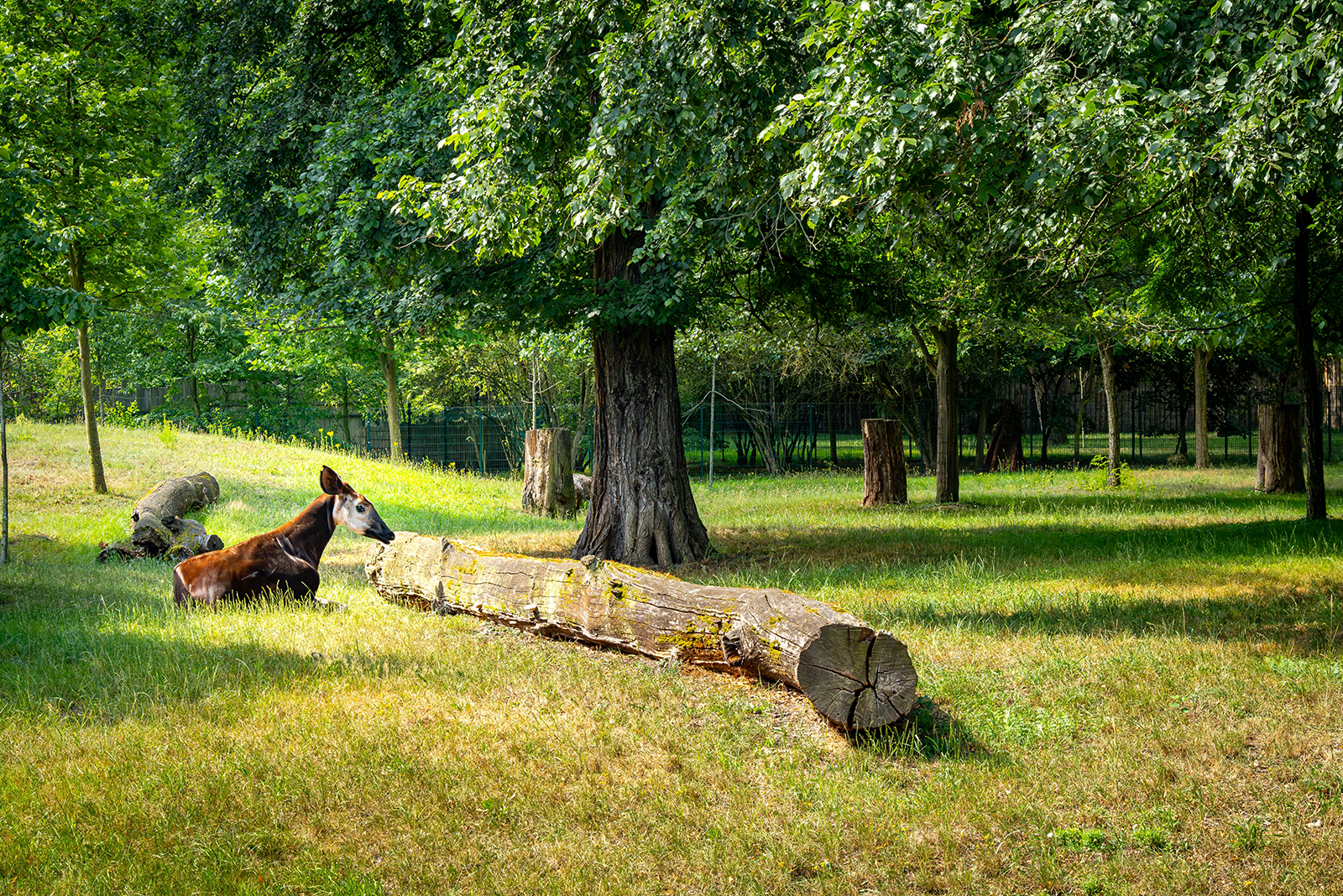
Credit: Shutterstock
Okapis are the introverts of the animal kingdom, and they absolutely own it. Unlike their highly social giraffe cousins, these mysterious mammals prefer to do their own thing.
They roam the rainforest solo, staking out territories they call their own and only coming together when it’s time to mate. This solitary lifestyle adds to their mystique but also makes every encounter with them feel like a hidden tea party!
Imagine walking through a dense rainforest and catching a glimpse of one of these beautiful animals. Bingo! Winning the wildlife lottery over here. Their solitary nature is part of what makes them so enchanting, a rare treat for anyone lucky enough to cross their path.
8. Fingerprint Stripes
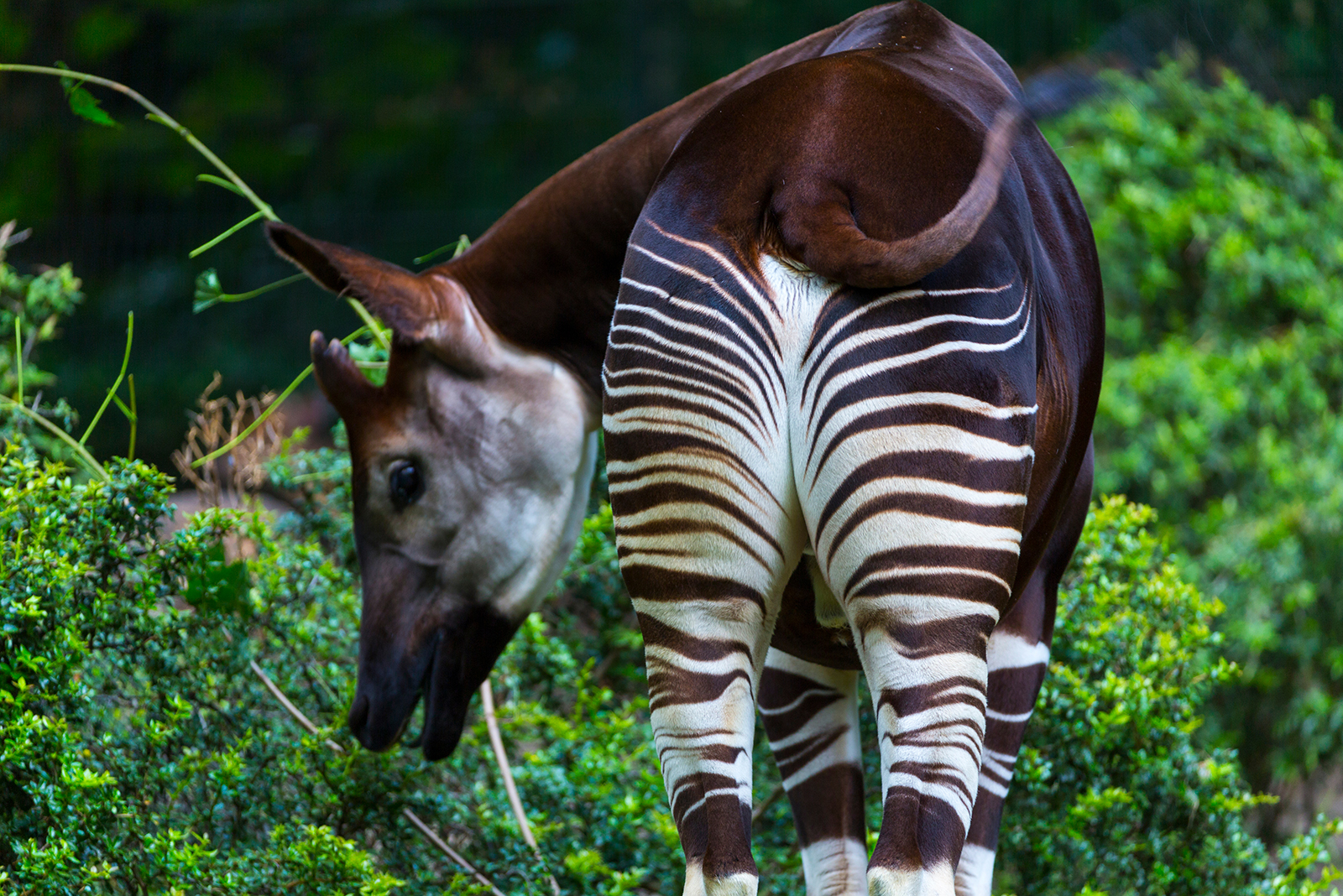
Credit: Shutterstock
The okapi’s stripes aren’t just eye-catching; they’re a work of art that doubles as a personal ID system. Much like human fingerprints, no two sets of stripes are the same.
This makes every okapi unique, a walking masterpiece of the rainforest. These distinct patterns have a crucial purpose, especially for mothers and their calves. In the dense, shadowy jungle, the stripes act as a visual cue, helping calves recognize and follow their mothers.
Being kind of like a barcode, it ensures that in the chaos of the rainforest, family bonds stay strong!
9. Eco Warriors
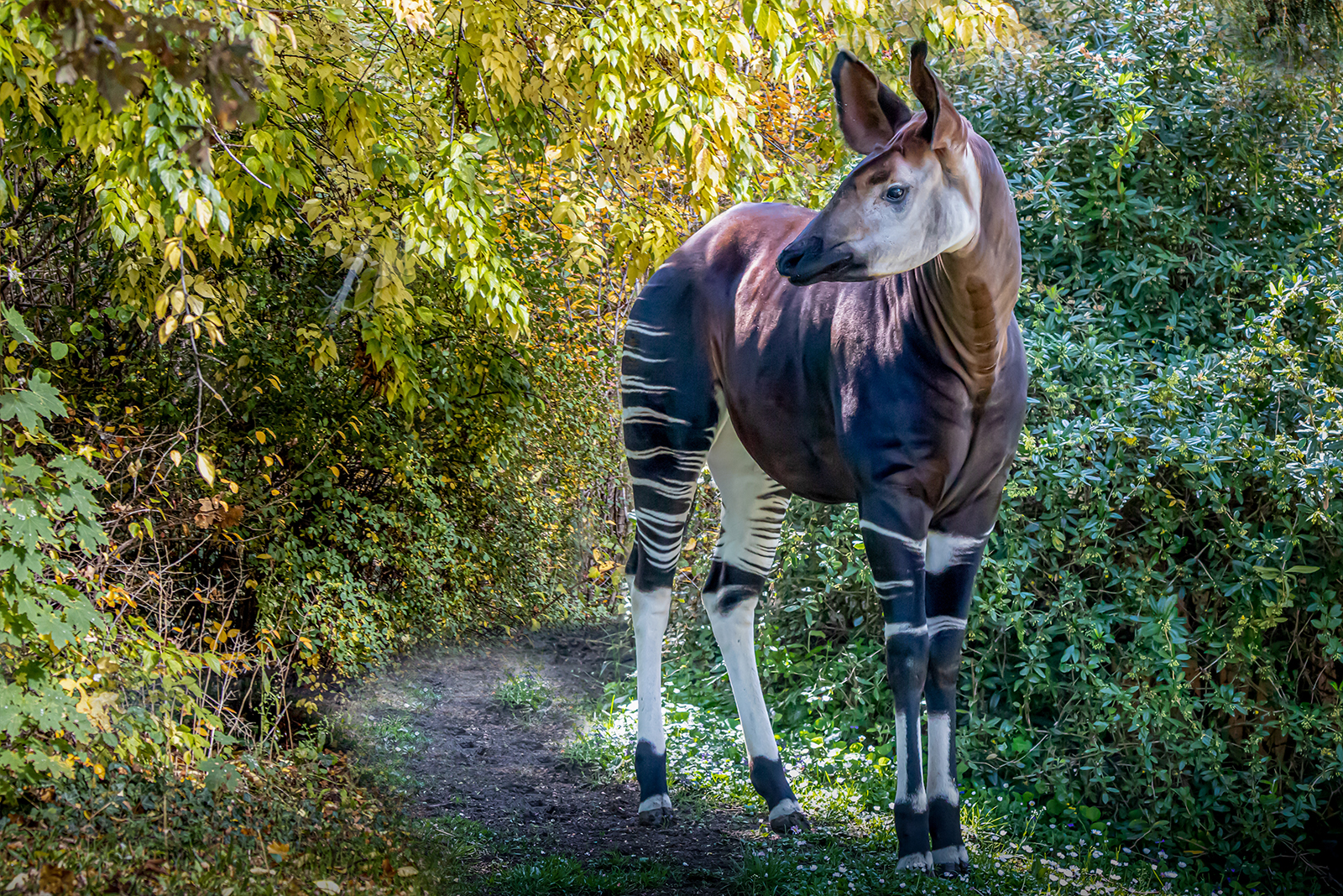
Credit: Shutterstock
Okapis are also crucial players in maintaining the balance of their rainforest home! As herbivores, these animals munch on over 100 different types of plants, many of which are toxic to other creatures. It’s like they have a built-in immunity superpower!
By consuming these plants, they prevent certain species of vegetation from overrunning the forest, allowing other plants and animals to thrive. But that’s not all.
When okapis eat, they also spread seeds through their droppings, acting as nature’s gardeners and helping to regenerate the rainforest. Imagine a creature that snacks, trims, and plants – all in a day’s work!
Without okapis, the delicate balance of the ecosystem could be thrown into chaos. Welp, the shyest animals can make the biggest impact!
10. Endangerment
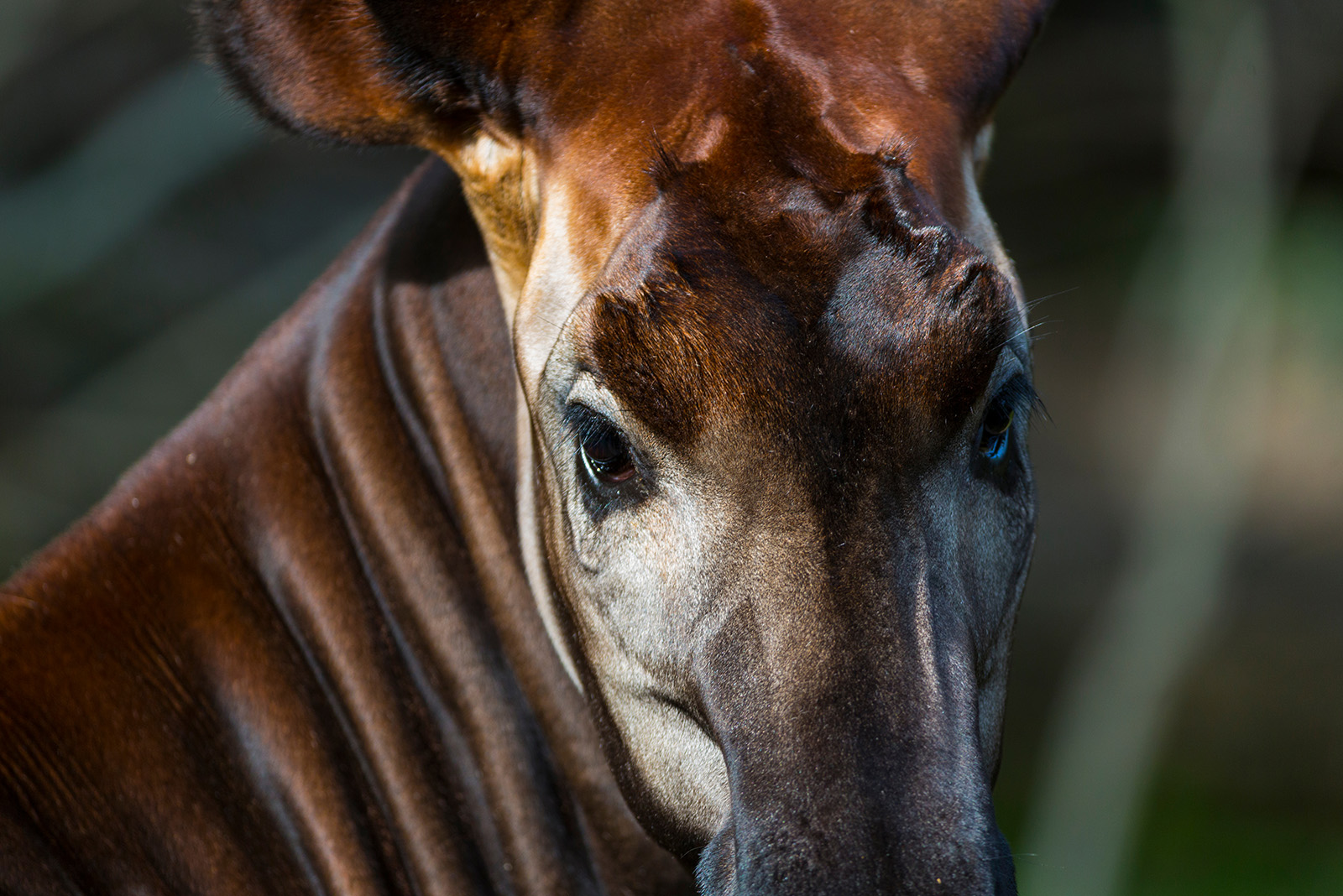
Credit: Shutterstock
Despite their knack for staying hidden, the okapi hasn’t been able to avoid the dangers posed by humans. Habitat loss due to deforestation, illegal mining, and agricultural expansion has chipped away at their rainforest home! Oh no!
Add poaching into the mix, and it’s clear why this species is struggling. Their elusive nature once worked to their advantage, but now it makes monitoring and protecting them even more challenging. Thankfully, conservationists are stepping up with efforts to save the okapi. Protected areas have been created, and local communities were educated about their importance too! Still, the fight to save the okapi is far from over. Every effort counts in ensuring that this “zebra giraffe” continues to grace the rainforests for generations to come.

